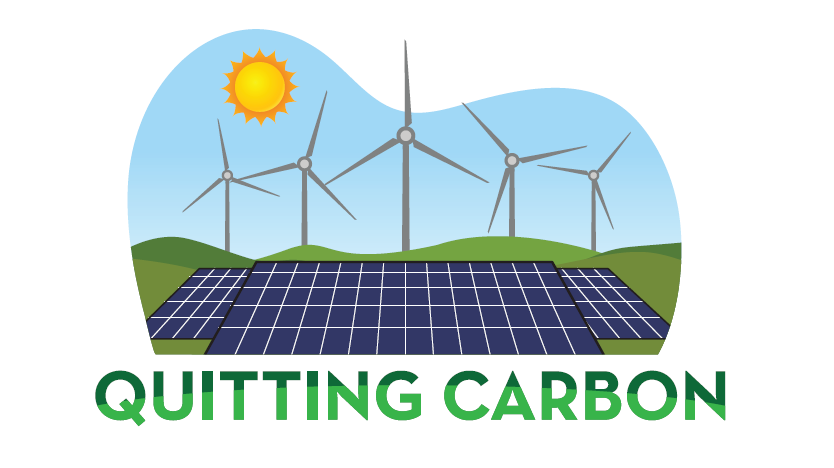What I’m reading: A game-changing electric truck, bottlenecks for global grid expansion, Trump targets home energy assistance, and more

Quitting Carbon is a 100% subscriber-funded publication. To support my work, please consider becoming a paid subscriber or making a one-time donation.
I have several stories in the works, including an update coming next week on the potential for developers to build marine energy projects offshore California. Until then, here is another roundup of highlights from what I've been reading. Enjoy!
Update on the Port of Oakland’s decarbonization grant: In my last roundup, I promised to report back on whether the Port of Oakland was having difficulty accessing the $322 million grant it had received from the U.S. Environmental Protection Agency (EPA) to buy hundreds of zero-emissions trucks and cargo-handling vehicles. The grant was awarded by the Biden administration, with the funding coming from the Clean Ports Program, a $3 billion program created by the Inflation Reduction Act.
Here is the update I received from Port of Oakland spokesperson David DeWitt: “The Port of Oakland continues to receive funding from our EPA Clean Ports grant. We remain confident the program will continue to fund the modernization of U.S. ports to remain competitive in a global market and maintain peak performance and efficiency.”
How the Trump administration justifies killing grants: Based on sleuthing by the Washington Post’s Carolyn Y. Johnson and Joel Achenbach, we have a better understanding of the rationale the Trump administration is using to justify killing grants across the federal government.
“In the waning days of the first Trump administration, new language went into effect in an obscure regulation covering federal grants. The change appeared to give the government the right to torpedo a grant in the middle of a project with little justification, even if the recipients were doing exactly what the government had told them to do,” write Johnson and Achenbach in a story published on March 27.
They went on: “The revision in November 2020 by Trump’s Office of Management and Budget [OMB] stated that, ‘to the greatest extent authorized by law,’ a grant could be pulled if it ‘no longer effectuates the program goals or agency priorities.’ In the middle of a pandemic and a contentious election, not many people noticed the change in language buried inside a regulation like 2 CFR 200.340(a)(2). Now, after lurking mostly beneath the radar, five consequential words – ‘no longer effectuates agency priorities’ – are being deployed by Trump’s appointees to kill grants unilaterally across the government and advance the president’s political agenda.”
Will federal judges buy the White House’s rationale for unilaterally killing funding that had been authorized by Congress? We shall see.
Trump administration guts home energy assistance program: This story was just too important to leave out. It turns out that among the 10,000 civil servants fired by Robert F. Kennedy Jr.’s Department of Health and Human Services on Monday was the entire team that ran the federal Low Income Home Energy Assistance Program (LIHEAP). The program, which was created by Congress in 1981, subsidizes the utility bills paid by 6.2 million low-income households across the U.S.
“They fired everybody, there’s nobody left to do anything. Either this was incredibly sloppy, or they intend to kill the program altogether,” Mark Wolfe, executive director of the National Energy Assistance Directors Association, told the New York Times’ Brad Plumer.
“Congress had approved $4.1 billion for the program for fiscal year 2025, and about 90 percent of that money had already been sent to states in October to help households struggling with high heating costs. There is still about $378 million left to assist with summer cooling as households crank up their air-conditioners,” reports Plumer.
“Now, it’s not clear how the remaining funds could be disbursed to the states, even though Congress has explicitly ordered the federal government to spend the money.”
Supply chain snarls slow global transmission grid expansion: Even before Donald Trump announced a round of “reciprocal” tariffs that ignited a global trade war this week, supply chain bottlenecks were making it more difficult to source key components used to build transmission grid infrastructure around the world.
“Prices and procurement times for essential components like power transformers and cables have almost doubled in four years, creating significant hurdles for grid developers,” the International Energy Agency (IEA) said in a press release announcing a new report, “Building the Future Transmission Grid: Strategies to Navigate Supply Chain Challenges.”
“An IEA survey of industry leaders found that procurement now takes two to three years for cables and up to four years for large power transformers – twice as long as in 2021. Specialised components face even longer delays, with lead times for direct current cables – often used for long-distance transmission – extending beyond five years. The price increases for components are equally concerning. In real terms, cable costs have nearly doubled since 2019 while power transformer prices have increased by around 75%,” said IEA.
Much more investment is expected to be needed for global grid expansion over the next decade.
“While global investment in power transmission grew by 10% in 2023 to reach $140 billion, this figure would need to exceed $200 billion annually by the mid-2030s to meet rising electricity demand,” according to IEA.
Volvo unveils a game-changing electric truck: Battery electric heavy-duty trucks are rapidly becoming capable of even long-haul deliveries. Last month, Volvo introduced a new fully electric truck with a range of up to 600 kilometers (373 miles) and a charge time of just 40 minutes, James Murray reported last week at BusinessGreen. Volvo said it will start taking orders for the new Volvo FH Aero Electric with e-axle in the fourth quarter of this year.
Use of the e-axle creates more space for batteries, which means the FH Aero Electric can have up to eight battery packs onboard with a combined 780 kilowatt-hours of capacity. The additional range means the new trucks can complete runs longer than the short-haul, regional routes electric trucks had been used for until now.
"This is a real breakthrough in zero-emission transport. Now, transport companies can operate really long distances with electric trucks without having to compromise on productivity. The superfast charging and high payload capacity make this a very competitive solution,” Roger Alm, president at Volvo Trucks, told Murray.
Bonus: Elon Musk’s government-slashing blueprint? The passage below is taken from New Yorker staff writer Jon Lee Anderson’s recent profile of Javier Milei, the chain saw-wielding president of Argentina. Sound familiar?
“Yet ideological enthusiasm may not sustain many Argentineans through a long period of painful change. Milei has so far fired about thirty thousand public employees – nearly a tenth of the federal workforce. Many of those who remain fear they will be fired soon, as the administration recently announced that forty thousand of them would have to pass an exam or lose their jobs. There have been huge reductions to funding for health care and scientific research. Much of the education sector has been gutted; among other things, Milei cut inflation adjustments for universities, leaving many campuses unable to pay for lights and heat. A dozen ministries have been dissolved or downgraded and defunded. The department of public works has been frozen; an estimated two hundred thousand construction workers have since been fired, leaving behind half-finished buildings. There have been radical cuts in aid to impoverished children. While inflation has declined to less than three per cent, the poverty rate has grown roughly eleven points, to fifty-three per cent.”
Bonus: What makes something remarkable: The New Yorker’s Casey Cep closes her review of the woodworker Callum Robinson’s memoir Ingrained: The Making of a Craftsman by quoting this lovely passage from the book’s epilogue:
“All the creative thinking, fortitude, skill and muscle in the world isn’t enough to make something remarkable. You must know, deep inside, that what you are doing is important, meaningful – vital. That someone somewhere needs it to be special, that you have thought about them, and that you care.” (emphasis in original)
“That might not amount to a structural analysis of labor, but it is a beautiful aspiration for laboring, a call for all of us, whatever we do all day, to do it with passion and care,” writes Cep.




